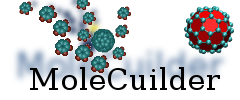- File:
-
- 1 edited
Legend:
- Unmodified
- Added
- Removed
-
src/UIElements/CommandLineUI/CommandLineParser.hpp
rce7fdc re6c470 24 24 #include <map> 25 25 26 namespace MoleCuilder { 27 class Action; 28 class OptionTrait; 29 } 30 class CommandLineParser_ActionRegistry_ConsistenyTest; 26 class Action; 27 class CommandLineParser_ActionRegistry_ConsistencyTest; 28 class OptionTrait; 31 29 32 30 /** This class is a wrapper for boost::program_options. 33 *34 * <h1> CommandLine Howto </h1>35 * <h2> Introduction </h2>36 *37 * The UIFactory is a base class for the User Interaction. There are three UI specializations:38 * Text, GUI and CommandLine. Accessing functionality via the CommandLine UI is explained here.39 *40 * First, an Action has to be written for the specific functionality. This Action should41 * be added in Actions/...Action in the respective subdirectory of the following types:42 * -# Analysis: Analysis actions like evaluating pair correlation, bonds, ...43 * -# Atom: adding, removing, manipulating atoms44 * -# Cmd: specifying data bases, verbosity, ...45 * -# Fragmentation: fragmenting a system, performing graph analysis, ...46 * -# Molecule: adding, removing, manipulating molecules47 * -# Parser: Parsing files (loading, saving)48 * -# Tesselation: obtaining (non)convex surface of a molecule, embedding, ...49 * -# World: Setting Box dimensions, default name of new molecules, ...50 *51 * The CommandLineUIFactory is a specialization of the UIFactory for parsing command52 * line parameters, generating and executing actions there from.53 *54 * The idea of the CommandLineFactory is explained elsewhere, here we would like to give a55 * receipe for creating new actions.56 *57 * <h3>Introducing new actions</h3>58 *59 * Let us now introduce what to do if a new action is to be implemented. Here, we use the60 * CommandLineVersionAction as an example.61 * This consists if basically three parts:62 * 1. Create the files, write the classes and make them compilable63 * - Create new source and header files in one of the above subfolders in the Actions folder,64 * e.g. create VersionAction.cpp and VersionAction.hpp in Actions/Cmd/65 * - Give it a sensible class name, the convention is <type><what it does>Action,66 * where <type> is basically the naming (written out) of the subdirectory,67 * e.g. class CommandLineVersionAction.68 * - Add the source and header file to the respective variables in molecuilder/src/Makefile.am,69 * e.g. if you add a Cmd action the variables are CMDACTIONSOURCE and CMDACTIONHEADER,70 * such that they get compiled.71 * 2. Add an instance to the CommandLineUIFactory, such that they are known to the UI.72 * - Add the header file as an include to UIElements/CommandLineWindow.cpp, e.g.73 * #include "Actions/Cmd/VersionAction.hpp"74 * - Add an instance of your class to the specific populater-function in75 * UIElements/CommandLineWindow.cpp, e.g. for the above Cmd action, add to populateCommandActions()76 * add new CommandLineVersionAction().77 * This will automatically register in the ActionRegistry.78 * 3. Give them an option name, short hand an description, such that they can be referenced from79 * the command line.80 * - think of a new key name, e.g. "version", which is the long form of the command parameter,81 * i.e. --version).82 * - add this key to every map of MapofActions, i.e. to83 * - MapofActions::DescriptionMap: the description which appears as help and tooltip84 * - MapofActions::ShortFormMap: the short form of the command parameter (e.g. -v)85 * - MapofActions::ValueMap: the value the command parameter has (do not create if it does not need one)86 * - If your action requires additional parameters, these need to be added in the same manner as in87 * the list item above.88 *89 * Don't forget to write the actual code. :)90 *91 * <h3>Writing an action</h3>92 *93 * As you write a new action you may think in terms of the command line, i.e. you want to use this94 * new functionality you add by calling molecuilder as: ./molecuilder --super-action foobar.txt, where95 * the key of your new action would be "super-action". While this is fine, keep in mind, that your action96 * should be useable for the other UI specializations as well, i.e. from the menu and the GUI. Therefore,97 * -# Don't use cin to ask the user for input: Use Query...()!98 * -# Rather don't use cout/cerrs, but either give Log() or eLog() or use QueryEmpty() if you want to give99 * the user specific information what you ask of him.100 31 * 101 32 */ … … 153 84 154 85 // adds options to the parser 155 void AddOptionToParser(const MoleCuilder::OptionTrait * const currentOption, po::options_description* OptionList);86 void AddOptionToParser(const OptionTrait * const currentOption, po::options_description* OptionList); 156 87 157 88 // creates a map from short forms to action tokens needed to parse command line
Note:
See TracChangeset
for help on using the changeset viewer.
